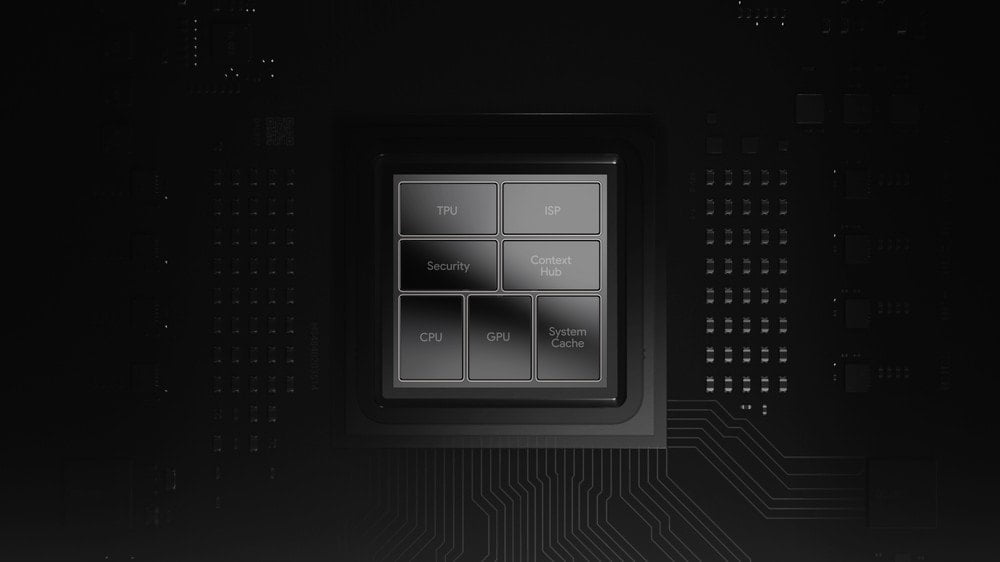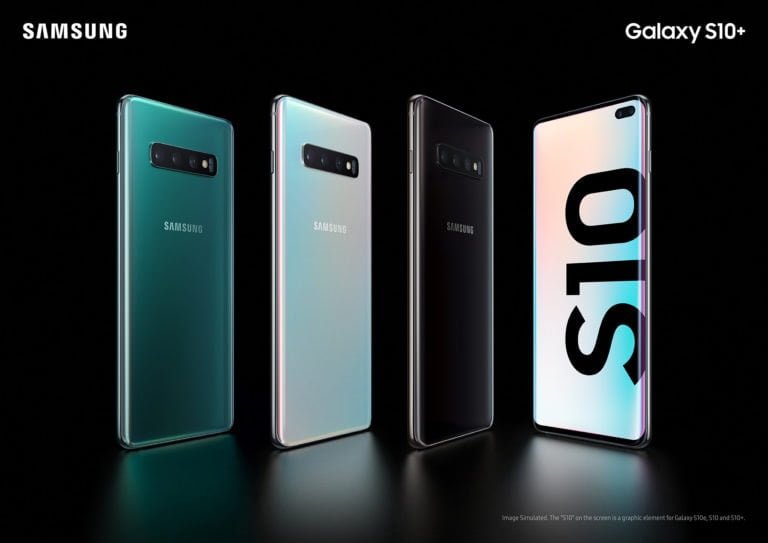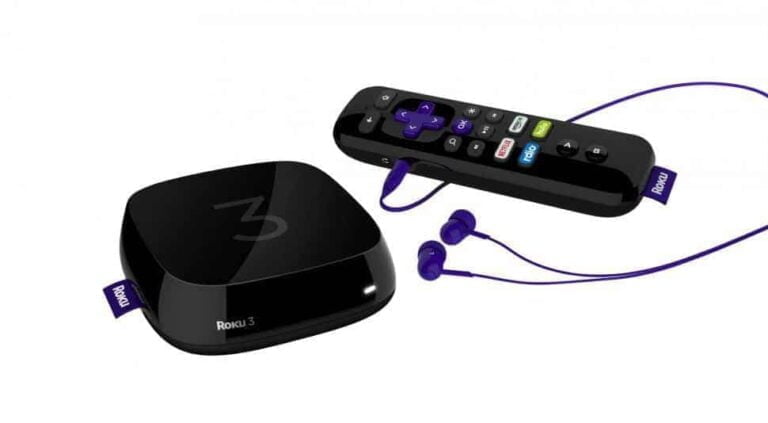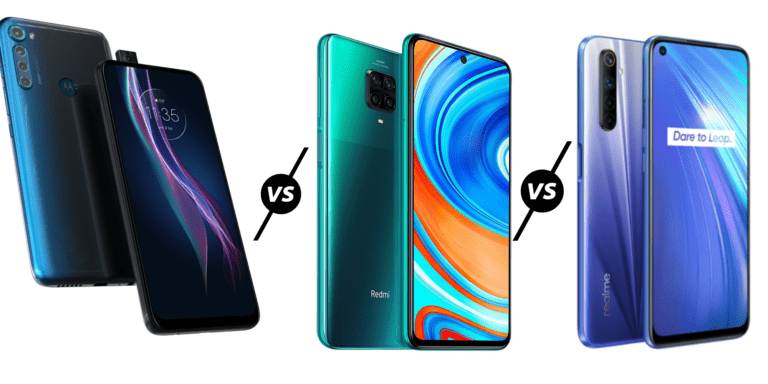Any links to online stores should be assumed to be affiliates. The company or PR agency provides all or most review samples. They have no control over my content, and I provide my honest opinion.
Yesterday, Google announced the latest flagship Pixel phones, the Pixel 6 Pro and Pixel 6.
This is the biggest Pixel launch in years, the entire phone has seen a huge refresh ditching the old 12MP camera they used, improving the size of the battery and introducing the first custom Google Tensor chipset, which will compete against the likes of the Qualcomm Snapdragon 888.
Surprisingly, Google has priced the phones reasonably attractively. The end result is two well specced and reasonably priced phones that should appeal to the masses rather than just die-hard Google fans.
However, how good is the new Google Tensor in comparison to the market-leading Qualcomm Snapdragon 888 and other flagship chipsets from this year?
Specification Comparison Table
| Google Tensor | Qualcomm Snapdragon 888 | Samsung Exynos 2100 | Mediatek Dimensity 1200 | |
|---|---|---|---|---|
| Fabrication Process | 5nm | 5nm | 5nm | 6nm |
| CPU | 2x Arm Cortex-X1 @ 2.80GHz 2x Arm Cortex-A76 @ 2.25GHz 4x Arm Cortex-A55 @ 1.80GHz | 1x ARM Cortex-X1 @ 2.84 GHz 3x ARM Cortex-A78 @ 2.42 GHz 4x ARM Cortex-A55 @ 1.8 GHz | 1x Arm Cortex-X1 @ 2.9GHz 3x Arm Cortex-A78 @ 2.8GHz 4x Arm Cortex A55 @ 2.2GHz | 1 x Arm Cortex A78 @ 3.0Ghz 3 x Arm Cortex A78 @ 2.6Ghz 4 x Arm Cortex A55 @ 2Ghz |
| GPU | Arm Mali G78MP20 | Qualcomm Adreno 660 | Arm Mali G78MP14 | Arm Mali G77 MC9 |
| AI/NPU | Tensor Processing Unit | Hexagon 780 DSP | Triple NPU + DSP | APU 3.0 |
CPU

- Google Tensor 5nm
- 2x Arm Cortex-X1 @ 2.80GHz
- 2x Arm Cortex-A76 @ 2.25GHz
- 4x Arm Cortex-A55 @ 1.80GHz
- Qualcomm Snapdragon 888
- 1x ARM Cortex-X1 @ 2.84 GHz
- 3x ARM Cortex-A78 @ 2.42 GHz
- 4x ARM Cortex-A55 @ 1.8 GHz
- Samsung Exynos 2100
- 1x Arm Cortex-X1 @ 2.9GHz
- 3x Arm Cortex-A78 @ 2.8GHz
- 4x Arm Cortex A55 @ 2.2GHz
- Mediatek Dimensity 1200
- 1 x Arm Cortex A78 @ 3.0Ghz
- 3 x Arm Cortex A78 @ 2.6Ghz
- 4 x Arm Cortex A55 @ 2Ghz
As you can see from the above, the Google Tensor has quite a peculiar CPU specification. They are the only company to use two Arm Cortex-X1 CPUs, the new CPU that prioritises performance over battery efficiency. They have then paired it up with two Arm Cortex-A76 cores which featured on the flagship chipset from two years ago.
Apparently, Google used the A76 because they want to focus on better-sustained performance at lower power levels. However, the A77 and A78 offer efficiency improvements over the A76. The battery performance of A78 based chipsets such as the Mediatek Dimensity 1200 and Qualcomm Snapdragon 778G has been exceptional.
You could argue that the A76 CPU is much more mature, and with this chipset being designed specifically for Google that they have managed to get the best overall performance/power efficiency balance as possible.
GPU
- Google Tensor 5nm
- Arm Mali G78MP20
- Qualcomm Snapdragon 888
- Qualcomm Adreno 660
- Samsung Exynos 2100
- Arm Mali G78MP14
- Mediatek Dimensity 1200
- Arm Mali G77 MC9
The Google Tensor has an absolute monster of a GPU with a 20-core G78 that is 42% more than the Samsung Exynos 2100 but 4 cores or 16% behind the Huawei Kirin 9000.
What we don’t know is the GPU frequencies so there is no guarantee it will be faster than the Samsung.
It is also hard to tell how it will perform against the Qualcomm Adreno 660.
When I benchmarked the Samsung Exynos 2100 vs Qualcomm Snapdragon 888, the SD888 outperformed the Exynos 2100 in Antutu overall and the GPU test. It then scored around the same on the 3D Mark Wild Life test. I would say the GPU on the Google Tensor should, in theory, outperform the other chipsets.
Thermal Throttling / Battery

One thing we have no idea about is how the Google Tensor will perform under sustained load and the overall battery performance.
I have been very disappointed with the SD888 and Exynos 2100 due to their issues with thermal throttling and overall poor battery life.
The Arm Cortex-X1 seems to be the culprit for this problem so Google doubling up on the CPU could be problematic. However, they also have the much less powerful A76 CPU, which may reign in the heat overall.
Google also have the advantage of this being designed specifically for the Pixel 6 series. So I am sure they have optimised it the best they can.
AI
- Google Tensor 5nm
- Tensor Processing Unit
- Qualcomm Snapdragon 888
- Hexagon 780 DSP
- Samsung Exynos 2100
- Triple NPU + DSP
- Mediatek Dimensity 1200
- APU 3.0
There is not much to say here as it is hard to draw proper conclusions about the custom AI solutions each company has. The Tensor Processing Unit is designed by Google and they have obviously built the OS for the Pixel around it, so it seems logical to assume that they have the upper hand here.
One example of this advantage is that Google Assistant on Google Tensor uses the most accurate Automatic Speech Recognition (ASR) ever released by Google. There is even a live translate function built into the text input for messaging.
The Pixel phones have consistently been regarded as the best camera phones and it is the Tensor powered computational photography that aids with this.
Google also include the Titan M2 co-processor which is used to protect your sensitive user data.
Overall
The Google Tensor is a bit of a mixed bag when you compare it to the other flagship chipsets from this year. It is a huge leap from the Qualcomm Snapdragon 765G used on the Pixel 4, that chipset was already showing its age by the time Google used it.
As I have stated multiple times in my comparison, Google has the advantage of designing the entire phone, including the OS around this chipset. It is possible that they may not get this first iteration perfect, but long term, this should give Google a massive advantage over competing brands.
I am James, a UK-based tech enthusiast and the Editor and Owner of Mighty Gadget, which I’ve proudly run since 2007. Passionate about all things technology, my expertise spans from computers and networking to mobile, wearables, and smart home devices.
As a fitness fanatic who loves running and cycling, I also have a keen interest in fitness-related technology, and I take every opportunity to cover this niche on my blog. My diverse interests allow me to bring a unique perspective to tech blogging, merging lifestyle, fitness, and the latest tech trends.
In my academic pursuits, I earned a BSc in Information Systems Design from UCLAN, before advancing my learning with a Master’s Degree in Computing. This advanced study also included Cisco CCNA accreditation, further demonstrating my commitment to understanding and staying ahead of the technology curve.
I’m proud to share that Vuelio has consistently ranked Mighty Gadget as one of the top technology blogs in the UK. With my dedication to technology and drive to share my insights, I aim to continue providing my readers with engaging and informative content.






